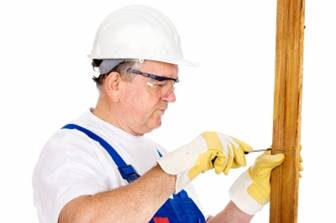According to Prevent Blindness America and the AmericanAcademy of Ophthalmology, over 2.5 million eye injuries occur in the U.S. each year. Of those injuries, about 50,000 people are left with some form of permanent vision loss. For eyecare practitioners, those are very sobering numbers considering that up to 90 percent of these injuries could be prevented with the right protective gear.
Since October is Eye Injury Prevention Month, we want to take this time to encourage practitioners to take some time to remind patients of the importance of wearing proper protective eyewear. From household tasks to sports and work, there are a number of eye injury hazards your patients may not be aware of, and it is up to you to help them understand what they can do to avoid unnecessary eye injuries and vision loss.
Nearly half of all eye injuries occur at home, according to Get Eye Smart, and approximately 125,000 of these injuries involve common household cleaners. Patients should be reminded to wear safety glasses, goggles or face shields that meet the appropriate safety standards to protect their eyes not only from chemical-related injuries, but also injuries that could result from using lawn maintenance equipment, power tools or even cooking.
Workplace eye injuries affect about 2,000 people each day in the U.S., with 10 to 20 percent causing permanent vision loss. Patients should be aware of the dangers present at their workplace and eliminate them if at all possible. If they don’t know of the dangers, encourage them to ask their employer. Remind them to wear protective glasses, goggles and other gear as required by their employer, or help them select the gear they should be wearing.
Sports-related eye injuries affect more than 31,000 people a year, according to Prevent Blindness America. If you have patients, adults or children, that are active in sports, remind them that safety glasses or goggles with lenses made of polycarbonate will provide great protection, as polycarbonate is shatterproof. They may also want to consider a face shield of the same material for sports such as baseball. Remind them that regular prescription glasses are not enough.
How will you encourage the use of protective eyewear to your patients this month? Let us know in a comment below!
